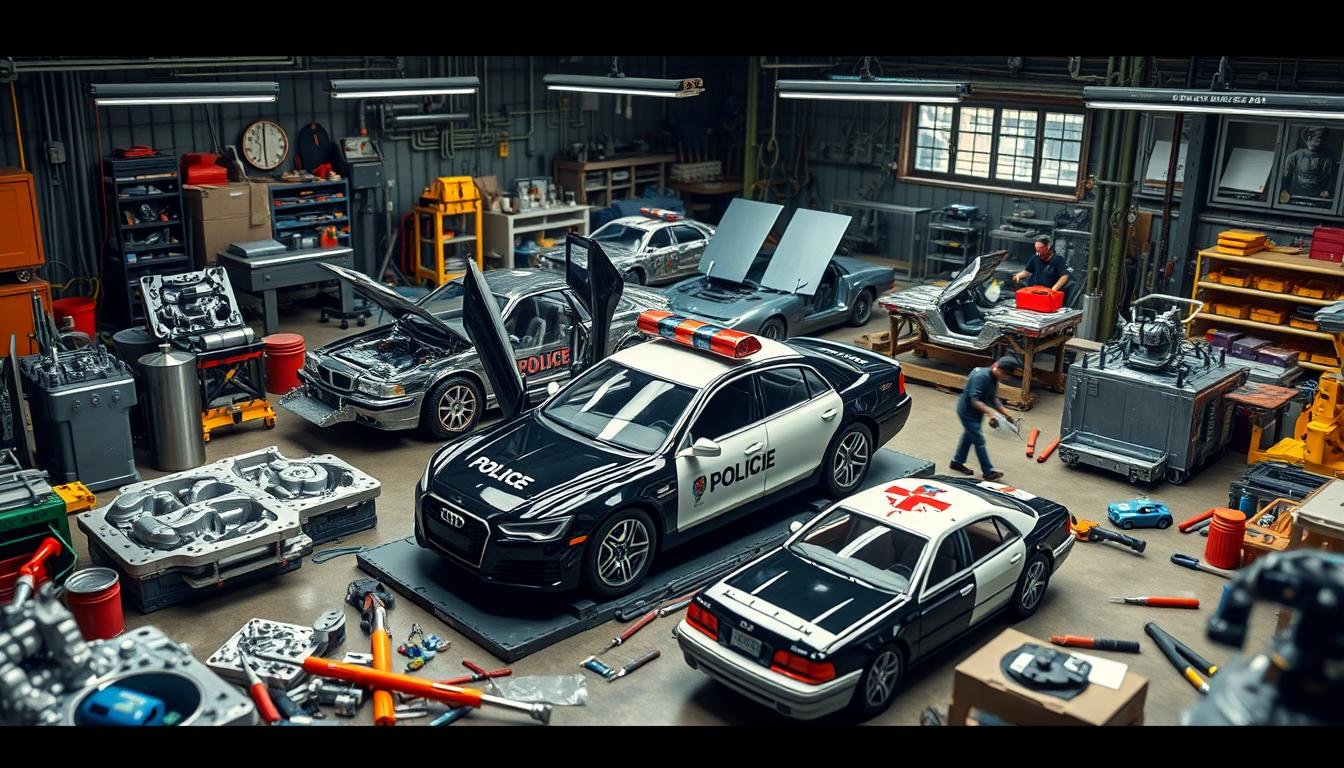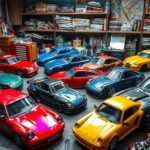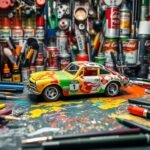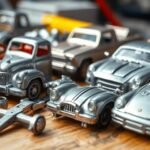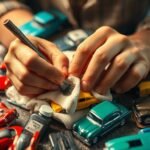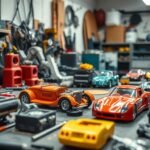Are you ready to take your love for law enforcement vehicles to the next level? Custom diecast police car models let you own miniature replicas that show your passion and creativity. But where do you even begin? This guide will show you how to create your own custom diecast police car, from defining your vision to understanding the production process.
In recent years, custom diecast police car models have become very popular. This is thanks to social media and online communities. Enthusiasts are sharing their work, techniques, and tips, inspiring others to try this hobby. Whether you’re experienced or just starting, making your own custom diecast police car is both challenging and rewarding.
Key Takeaways
- Custom diecast police car models offer a unique way to own miniature replicas of law enforcement vehicles
- The process involves defining your vision, researching reputable modelers, and understanding the production process
- Customization has become increasingly popular due to social media and online communities, allowing enthusiasts to share their work and techniques
- This guide will help you navigate the process of creating a custom diecast police car model, ensuring a high-quality result that reflects your passion for law enforcement vehicles
- Key steps include sourcing the right tools and materials, as well as learning the step-by-step process for successful model building
Essential Tools and Materials for Custom Police Car Models
Making your own diecast police car model needs a good set of tools and special supplies. If you love hobby metalworking or custom diecast crafting, having the right gear is key. It helps you build a law enforcement replica that looks just right.
Basic Tools for Disassembly and Modification
Begin your custom police car project with these basic tools:
- Craft knives or hobby blades for precise cutting and trimming
- Sanding tools, including files, sandpaper, and sanding blocks, for smoothing and shaping
- Tweezers and pliers for delicate handling and assembly
- A drill with a selection of bits for creating custom openings and mounting points
Paint Supplies and Finishing Materials
For a top-notch finish, you’ll need quality paints, primers, and clear coats:
- Model-specific acrylic or enamel paints in the desired colors
- Primers to ensure proper paint adhesion and coverage
- Paintbrushes or an airbrush for a smooth, even application
- Clear coats to protect your custom paint work
Custom Details and Police-Specific Components
To make your law enforcement replica building look real, add these custom details:
- Decals, logos, and markings to replicate your desired police department’s livery
- Light bars, antennas, and other equipment to mimic the look of a real police vehicle
- Window tints, wrap-around bumpers, and 3D-printed wheels or components
- Working lights and other functional features to bring your model to life
Before starting the custom diecast crafting process, make sure to prepare well. Clean and disassemble the car first. With the right tools and materials, you can turn a regular diecast car into a stunning police car model.
How to Make Diecast Police Car: Step-by-Step Process
Making a custom diecast police car needs patience and a keen eye for detail. Start by picking a base model and taking it apart. Make sure to clean each piece well.
Prepare the surfaces for paint by sanding them lightly. Then, apply a primer coat for a smooth base. This step is crucial for a good finish.
When painting, use thin, even layers. Let each layer dry before adding the next. This method ensures a professional look. Add decals, light bars, and other details to make your car look real.
Finally, apply a clear coat to protect the paint and enhance the look. This is the last step.
Keep in mind the best practices for diecast car modeling throughout the process. Focus on measurements, assembly, and safety. This will help you achieve a great result. Regular cleaning and maintenance will keep your diecast police car looking good for a long time.
FAQ
What tools and materials are required for creating custom diecast police car models?
How do I start the process of making a custom diecast police car?
What are the key steps in the customization process for a diecast police car model?
How can I ensure a professional-looking finish for my custom diecast police car model?
What are the benefits of creating a custom diecast police car model?
Source Links
- 1/24 Motor Max Crown Victoria Police Car Build | Scale Model/Die Cast Cars – https://www.crownvic.net/ubbthreads/ubbthreads.php?ubb=showflat&Number=2367513
- 2025 Chevrolet Blazer EV Police Pursuit Vehicle – https://www.gmenvolve.com/fleet/police/chevrolet-blazer-ppv-ev
- Police vehicles in the United States and Canada – https://en.wikipedia.org/wiki/Police_vehicles_in_the_United_States_and_Canada
- Model Police Car – https://www.instructables.com/Model-Police-Car/
- How to Make a DIY Toy Car: 4 Fun & Easy Tutorials – https://www.wikihow.com/Make-a-Toy-Car

